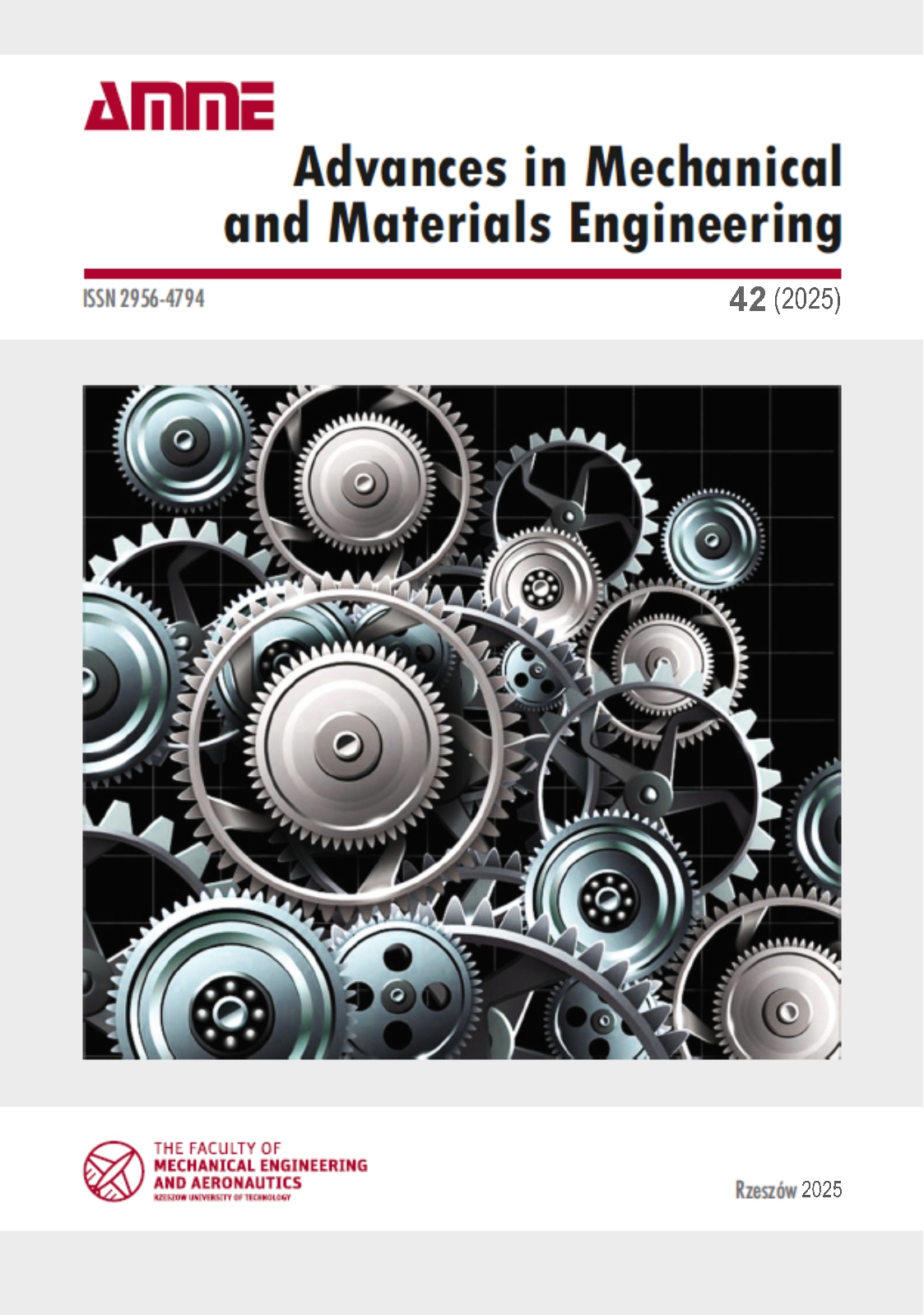Abstract
Clamping force is the most important factor influencing the reliability and durability of a bolt connection. Therefore, it is important to form the correct clamping force when tightening the bolt joint. In connection with the above, the article reviews the literature in the aspect of factors influencing the tribological properties of fasteners. The research part focuses on, not discussed by the other authors, determining the influence of the material of counterpart on the value of the clamping force of the bolted joint, formed in the joint during tightening. Due to the requirements of the automotive industry, where manufacturers expect universal fasteners that can be used with both steel and aluminum counterparts, both of these counterparts' materials were selected for research. The influence of top coats on the value of the clamping force of the bolt joint during tightening was also studied. Using a top coat on fasteners reduces the coefficient of friction during tightening by more than 30%. If a top coat is not applied to electrolytically galvanized fasteners, the friction coefficient increases three times compared to the friction coefficient obtained with top-coated bolts. In this case, the clamping force of the bolted joint is reduced by more than 60% when tightening the bolts.
References
Croccolo, D., De Agostinis, M., Fini, S., & Olmi, G. (2017). Tribological properties of bolts depending on different screw coatings and lubrications: An experimental study. Tribology International, 107, 199-205. https://doi.org/10.1016/j.triboint.2016.11.028
Croccolo, D., De Agostinis, M., Fini, S., Mele, M., Olmi, G., Scapecchi, C., & Tariq, M.H.B. (2023). Failure of threaded connections: A literature review. Machines, 11(2), Article 212. https://doi.org/10.3390/machines11020212
De Agostinis, M., Fini, S., & Olmi, G. (2015). The influence of lubrication on the frictional characteristics of threaded joints for planetary gearboxes. Proceedings of the Institution of Mechanical Engineers, Part C: Journal of Mechanical Engineering Science, 230(15), 2553-2563. https://doi.org/10.1177/0954406215605863
Eccles, W., Sherrington, I., & Arnell, R.D. (2010). Frictional changes during repeated tightening of zinc plated threaded fasteners. Tribology International, 43(4), 700-707. https://doi.org/10.1016/j.triboint.2009.10.010
Esmaeili, F., Zehsaz, M., & Chakherloum T. N. (2014). Investigation the effect of tightening torque on the fatigue strength of double lap simple bolted and hybrid (bolted–bonded) joints using volumetric method. Materials and Design, 63, 349-359. https://doi.org/10.1016/j.matdes.2014.06.021
European Committee for Standardization. (2017). Steel rod, bars and wire for cold heading and cold extrusion – Part 4: Technical delivery conditions for steels for quenching and tempering (EN Standard No. 10263-4:2017).
International Organization for Standardization. (2005). Fasteners - Torque/clamp force testing (ISO Standard No. 16047:2005). https://www.iso.org/standard/27788.html
International Organization for Standardization. (2013). Mechanical properties of fasteners made of carbon steel and alloy steel. Part 1: Bolts, screws and studs with specified property classes — Coarse thread and fine pitch thread (ISO Standard No. 898-1:2013). https://www.iso.org/standard/60610.html
Jiang, Y., Zhang, M., Park, T., & Lee, C. (2002). An experimental investigation on frictional properties of bolted joints. In Pressure Vessels and Piping Conference (pp. 59–66). American Society of Mechanical Engineers. https://doi.org/10.1115/PVP2002-1083
Liu, Z., Zheng, M., Yan, X. Zhao, Y., Cheng, Q., & Yang, C. (2020). Changing behavior of friction coefficient for high strength bolts during repeated tightening. Tribology International, 151, Article 106486. https://doi.org/10.1016/j.triboint.2020.106486
Ma, J. (2020). An experimental study on factors affecting the friction coefficients in electroplated bolts. Tribology Transactions, 63(5), 913-923. https://doi.org/10.1080/10402004.2020.1778146
Mokhtar, M. O. A. (1982). The effect of hardness on the frictional behaviour of metals. Wear, 78(3), 297-304. https://doi.org/10.1016/0043-1648(82)90240-X
Nassar, S. A., & Sun, T. S. (2007). Surface roughness effect on the torque-tension relationship in threaded fasteners. Proceedings of the Institution of Mechanical Engineers, Part J: Journal of Engineering Tribology, 221(2), 95-103. https://doi.org/10.1243/13506501JET192
Nassar, S. A. Ganeshmurthy, S., Ranganathan, R. M., & Barber, G. C. (2007). Effect of tightening speed on the torque-tension and wear pattern in bolted connections. Journal of Pressure Vessel Technology, 129(3), 426-440. https://doi.org/10.1115/1.2749290
VW Group Standard. (2018). Determination of coefficients of friction, steel mechanical fasteners with metric ISO threads (VW Standard No. 01131:2018).
Zou, Q., Sun, T. S., Nassar, S. A., Barber, G. C., & Gumul, A. K. (2007). Effect of lubrication on friction and torque-tension relationship in threaded fasteners. Tribology Transactions, 50(1), 127-136. https://doi.org/10.1080/10402000601105490


